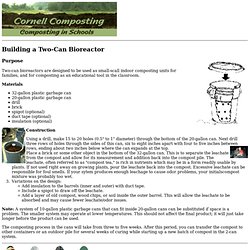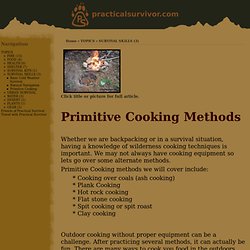

Making black powder. Bomb Basics: Why you need to know… Bomb Basics: Why you need to know… By Henry Morgenstern PresidentSecurity Solutions International (SSI)www.securitysolutionsint.com Security Solutions International is the leading national training company for Homeland Security from awareness training for first responders, to hospital and medical response and even helicopter and marine emergency response to acts of terror.

This article begins with a clear warning: under no circumstances should anyone touch or move an object that may be an explosive – no matter how much you think you know about bombs. This should only be undertaken by bomb squad or other highly qualified personnel. So why bother to learn about bomb basics? Swedish Fire Log - StumbleUpon.
Main.php?g2_itemId=8896 from teamprophoto.com. Paracord Lanyard Project - StumbleUpon. Nini Makes: Twig flower pots for giving, or keeping: a tutorial. Twig flower potI like to give plants to friends or family instead of cut flowers.

Plastic pots aren't pretty so I usually wrap them in something like hessian (burlap) and tie them with nice string. I recently tried repurposing laundry detergent containers and dressed them up with twigs - I liked the results. They're very easy to make, here's how: Supplies: Small saw (optional), hessian, a straight sided container, twigs or small branches that are fairly straight, jute twine, glue gun or string Gather a pile of twigs and cut them down to roughly the same length; you'll want them a little taller than your container. Take a long piece of twine (about a metre and a half) and at the middle of your piece of twine begin tying the sticks together.
Building a Two-Can Bioreactor. Purpose Two-can bioreactors are designed to be used as small-scall indoor composting units for families, and for composting as an educational tool in the classroom.

Materials 32-gallon plastic garbage can 20-gallon plastic garbage can drill brick spigot (optional) duct tape (optional) insulation (optional) Construction Using a drill, make 15 to 20 holes (0.5" to 1" diameter) through the bottom of the 20-gallon can. How to Build a Small-Scale Hydroelectric Generator. 100 Skills Every Man Should Know: 2008's Ultimate DIY List. Primitive Skills. S Homemade Soap Recipe by Robert Wayne Atkins, P.E. - Grandpappy - StumbleUpon. Grandpappy's Homemade Soap Recipe Copyright © 2007,2008 by Robert Wayne Atkins, P.E. All rights reserved and all rights protected under international copyright law. Click Here for a Microsoft WORD printer friendly copy of this article.
Introduction During hard times sooner or later everyone runs out of soap. To make soap you only need three things: rainwater,cold ashes from any hardwood fire, andanimal fat from almost any type of animal, such as a cow, pig, goat, sheep, bear, beaver, raccoon, opossum, groundhog, etc. 50 Rules of Combat.
Military Oprations On UrbanTerrain.pdf. Primitive cooking methods. Click title or picture for full article.

Primitive Cooking Methods Whether we are backpacking or in a survival situation, having a knowledge of wilderness cooking techniques is important. Long-Term Food Storage. The Fantastic Four – 4 Essential Wild Edible Plants that May Just Save Your Life. Did you realize that knowing just 4 wild edible plants could one day save your life?

If there were any four categories of plants that I would recommend all people to know how to use and identify it would be these: Grass, Oak, Pine, and Cattail. For the knowledgeable survivor, knowing just these four plants can make the difference between life and death if stranded in the wilds – for each one is an excellent food source which can sustain you until help arrives. Throughout this week and part of the next, I’ll be going into details on how you can prepare and eat these plants.
For now though, here’s a quick overview into what they have to offer: Grass Surprising to many is the fact that you can eat grass. The young shoots up to 6 inches tall can be eaten raw and the starchy base (usually white and at the bottom when you pluck it) can be eaten as a trail nibble. Oak Oak – specifically the acorn – is a great source of food in the fall and early winter time. Pine. Survival Topics - Your Online Survival Kit.
Bush & Hunting Knives.- Bushcraft working tools. Hand forged, High Carbon Working Knives.

Aki and I carve and sculpt our handles for fit and balance. Each is unique. Canadian Belt Knife. By cal (Slave Lake, Alberta, Canada) My favorite survival/ bush knife hands down is the Grohman #1, also known as the DH Russel canadian belt knife. The knife was invented in Nova Scotia by DH Russel. His method of invention involved making countless prototypes and giving them out to the trappers, guides, and outfitters, taking their suggestions and in the end he had a somewhat unique looking knife that performed almost any duty exceptionally well. The design was so far ahead of its time (1954, I believe) that one was put on display in the museum of modern science and can still be seen there.